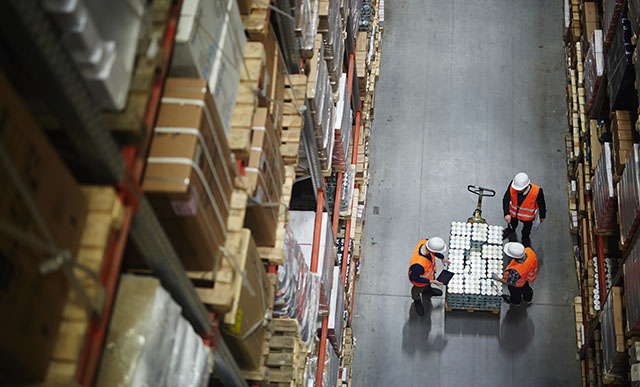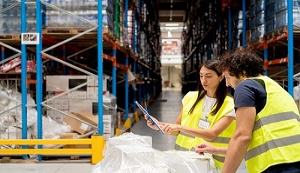by Kumar Singh, Research Director, SAPinsider
Building Sustainable Digital Twins
While supply chain leaders across industries and geographies grapple with managing the ever-increasing supply chain complexities and risks, there is an additional demand on the companies to be more resourceful and conscientious of environmental and social needs. There is no doubt that the collective awareness around Sustainability and specifically Sustainability in supply chains has increased, both within the consumers as well as all the supply chain stakeholders. Along with other factors, this collective awareness has also led to the emergence of Sustainability as a critical component of the supply chain process.
With all this focus on Sustainability, organizations are not only looking to build visibility into their end-to-end supply chains, but they are also looking to leverage the power of data and analytics to run more sustainable supply chains. This brings the critical role of technology in building Environmental, Social, and Corporate (ESG) governance capabilities to the forefront. Manufacturing obviously is the source of material and resources that are consumed by the next stage consumer and hence have a major role to play from a sustainability perspective. It provides a rich ground for leveraging data and analytics for building sustainable processes. And hence data-driven manufacturing solutions leveraging Industry 4.0 technologies can play a key role in helping organizations build sustainable supply chains from a manufacturing perspective.
SAPinsider recently had the opportunity to discuss best practices and challenges for leveraging technology for attaining sustainability goals with Mr. Daniel Metz, Head of Software Development at FORCAM. You can watch the entire video of the discussion here:
Discussion with FORCAM
The Growing Business Imperatives of Sustainability
Most organizations consume materials and resources and generate waste — in the form of raw material used in production, energy consumption to operate facilities, and environmental waste from plants. With greater consumer awareness of the impact of Sustainability, demands for more eco-friendly products and solutions have increased. Subsequently, there is a push for organizations to prove their contribution to these new age requirements. As a result, these organizations are making firm commitments to Sustainability, in large part through transparency and addressing material issues.
“Companies are looking to provide transparency to their customer and partner” according to Metz. He pointed out that while companies generally look to drive costs down, they are searching for more innovative ways to gain insights into energy and material use.
In addition to the collective awareness, organizations also need to adhere to regulatory and compliance guidelines pertaining to the impact their manufacturing and distribution processes make on the environment. Since manufacturing is the genesis of a product or resource, it is the focal point of all sustainability initiatives and hence is a special focus for executives.
Addressing the Imperatives Through Process Visibility
End-to-end visibility strategy to address the imperatives
A strategy that organizations formulate to address sustainability goals is to build end-to-end supply chain visibility. This means that they need to have visibility and tracking capabilities across all sub-functions within their supply chain, and manufacturing is one of those nodes within the supply chain. Hence, it is critical that organizations have seamless visibility into their complete manufacturing process.
The requirement to have near real-time data
Visibility into manufacturing processes is built by capturing data being generated by the process. This data needs can come from many different elements of the manufacturing process. You can capture data elements that were not being captured before and hence not only trace the characteristics of the product as it moves through the manufacturing process but also monitor and capture data on the assets (equipment) involved in the manufacturing process. As Metz highlights: “
An ability to view and drill down the data from an asset to determine how energy was consumed for a particular order or a part is becoming a critical requirement from our customers.”
Leveraging technology to capture the data
Industry 4.0 technologies today allow us not only to trace the characteristics of the product as it moves through the manufacturing process but also monitor and capture data on the assets (equipment) involved in the manufacturing process. Digital twin technology, which essentially helps us create virtual models of real-world physical objects, can be leveraged to build smart factories. In a smart factory setup, a digital twin of the end-to-end manufacturing process and all involved assets is developed, which then helps capture the granular level of data that we have discussed before. And this data can then be used in numerous ways to build more sustainable manufacturing processes.
What Does This Mean for SAPinsiders
Based on SAPinsider community insights and trends on the current Sustainability landscape, organizations should develop a strong sustainability strategy as part of their overall Supply Chain plans. Beyond costs, they should consider Sustainability as a critical supply chain driver and utilize it as a competitive weapon. Manufacturing needs to be a key focus area for these sustainability initiatives, and data and analytics solutions, specifically smart manufacturing solutions, can play a key role. However, there are some aspects SAPinsiders need to be aware of:
Understand the Sustainability related parameters. It is critical to understand what the Sustainability related parameters of your manufacturing operations are. A digital twin may be capturing hundreds of different data points across your manufacturing floor, so it is important that you cull out ones that impact your sustainability goals, like energy consumption.
Track sustainability parameters effectively. It is a prudent approach to track sustainability-related data points effectively. A suggested approach is to have a separate section or tab on Sustainability in your dashboarding tool. This not only allows you to segregate historical Sustainability related parameters from manufacturing operations but also emphasizes the importance of these parameters for those who use the dashboard.
Benchmark your manufacturing sustainability performance. A great starting point to understand where you currently stand is to benchmark your performance against your industry peers, best-of-breed organizations, and your own ambitions. This is where defining Key Performance Indicators (KPIs) becomes important so that you can effectively track your progress and keep on raising the bar.
Use advanced analytics to look for improvement opportunities. Digital twin solutions have capabilities to simulate your manufacturing operations. This simulation capability can help you understand if there is a more effective way to run your manufacturing operations, and you can also run modeling scenarios that help you evaluate options that will minimize the environmental footprint of your manufacturing operations. Advanced analytics approaches like predictive maintenance also help towards sustainability goals by ensuring that while a facility is operational, it is being used effectively with no machine downtime.





